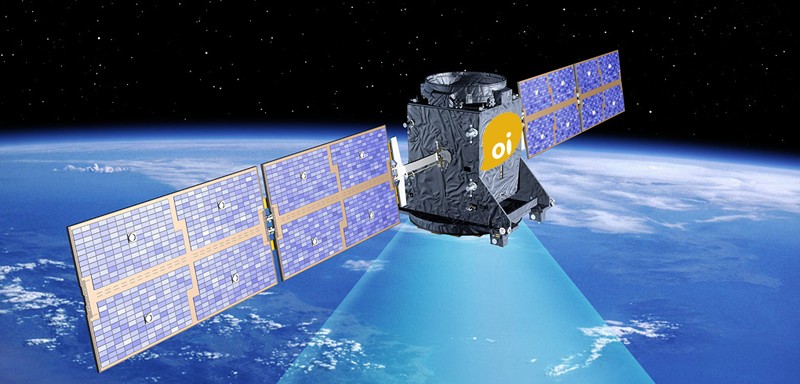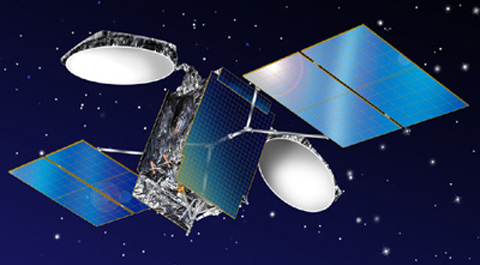Vietnam: Calibration in national satellite navigation network
On May 29, 2020, the Ministry of Natural Resources and Environment of Vietnam issued the Circular No. 03/2020/TT-BTNMT on technical regulations on national satellite navigation network.
.jpg)
According to Circular No. 03/2020/TT-BTNMT of the Ministry of Natural Resources and Environment of Vietnam, calibration in national satellite navigation network is specified as follows:
Calibrating and determining VN-2000 coordinates of national satellite navigation network
- Use level 0 national coordinates in the area as the starting points for calibration network; in case of expanding or intensifying national satellite navigation stations, may use satellite navigation stations active in the areas to use as the starting points for calibration network. Starting points must be distributed evenly within the calibration network; number of starting points shall rely on the number of national satellite navigation stations that require to be calibrated but must not be lower than 5 points.
- GNSS receivers positioned in level 0 national coordinates must be multi frequency receivers which must be able to receive at least L1/L2 signals from GPS and GLONASS systems; period of simultaneous and continuous monitor must not be less than 24 hours, starting from 7 a.m (Vietnam time); data sampling is 15 seconds; utilizing static measurement method with mask angle of 10o. Receivers installed in national satellite navigation stations must be configured as specified in Point m Clause 2 Article 9 of this Circular.
- Calculation and processing shall be performed by common GNSS processing software; during calculation and processing of baselines, must use final orbit to calculate. Variance of point positions after adjustment calculation must not exceed 2cm. Calculation process shall comply with Circular No. 06/2009/TT-BTNMT dated June 18, 2009 of Ministry of Natural Resources and Environment attaching Technical Regulations on developing national coordinate network.
Calibrating and determining altitude of national satellite navigation stations
- Establish independent altitude grids to determine altitude of points in the national navigation network. Design a single grid, each of which must utilize at least 2 points in high-level national leveling network in the areas as starting points. Designing, calibrating and calculating altitude shall comply with Decision No. 11/2008/QD-BTNMT dated December 18, 2008 of the Ministry of Natural Resources and Environment attached to National Technical Regulations on development of leveling grid.
- For points affiliated to base continuous operating reference stations: designing, calibrating and calculating shall be performed 999ccording to second-degree elevation measurement procedures. National altitude points serving as starting points must be second-degree and third-degree altitude points. Closure between 2 measurements and between 2 high category points must not exceed ±4√L for plains and ±5√L for mountainous regions (L refers to length of the measured space in km).
- For points affiliated to continuous operating reference stations: designing, calibrating and calculating shall be performed according to third-degree elevation measurement procedures. National altitude points serving as starting points must be first-degree, second-degree and third-degree altitude points. Closure between 2 measurements and between 2 high category points must not exceed ±10√L for plains and ±12√L for mountainous regions (L refers to length of the measured space in km).
- Calibrating and determining altitude of national navigation stations must be performed for all points as specified in Clause 4 Article 8 of this Circular. Vertical difference in the middle of altitude mark and ARP is determined by specialized steel rule or measuring instruments with equivalent accuracy and separately recorded from orthometric readings.
Calibrating and determining gravitational value of national satellite navigation stations
- On the basis of base gravitational points and first-degree gravitational points in measured areas, design measuring grids connected to the national satellite navigation network with accuracy of second-degree gravity according to relative gravity measurement method. Each grid must utilize at least 2 points in high-level national gravity network in the areas as starting points.
- Position for determining gravitational value on national satellite navigation stations is the altitude mark embossed on the base section. Reference variation of gravitational acceleration after having been adjusted must not exceed 0.05mGal.
- Use gravity measuring devices with accuracy of at least 0.03 mGal to determine gravitational value for the national satellite navigation network.
View more details at the Circular No. 03/2020/TT-BTNMT of the Ministry of Natural Resources and Environment of Vietnam, effective from July 15, 2020.
Ty Na
- Key word:
- Circular No. 03/2020/TT-BTNMT
- Number of deputy directors of departments in Vietnam in accordance with Decree 45/2025/ND-CP
- Cases ineligible for pardon in Vietnam in 2025
- Decree 50/2025 amending Decree 151/2017 on the management of public assets in Vietnam
- Circular 07/2025 amending Circular 02/2022 on the Law on Environmental Protection in Vietnam
- Adjustment to the organizational structure of the Ministry of Health of Vietnam: Certain agencies are no longer listed in the organizational structure
- Vietnam aims to welcome 22-23 million international tourists in Vietnam in 2025
-

- Vietnam: Regulation on overall design of national ...
- 12:04, 01/08/2020
-

- Vietnam: Survey and selection of location of national ...
- 11:50, 01/08/2020
-

- 03 satellite signal receptor of national satellite ...
- 11:25, 01/08/2020
-

- Circular 03: Data transmission solution of national ...
- 11:03, 01/08/2020
-

- Vietnam: 04 services provided by national satellite ...
- 10:35, 01/08/2020
-

- Notable new policies of Vietnam effective as of ...
- 16:26, 11/04/2025
-
.Medium.png)
- Notable documents of Vietnam in the previous week ...
- 16:21, 11/04/2025
-
.Medium.png)
- Notable documents of Vietnam in the previous week ...
- 16:11, 02/04/2025
-
.Medium.png)
- Notable new policies of Vietnam to be effective ...
- 16:04, 02/04/2025
-
.Medium.png)
- Notable new policies of Vietnam effective from ...
- 14:51, 21/03/2025
 Article table of contents
Article table of contents
